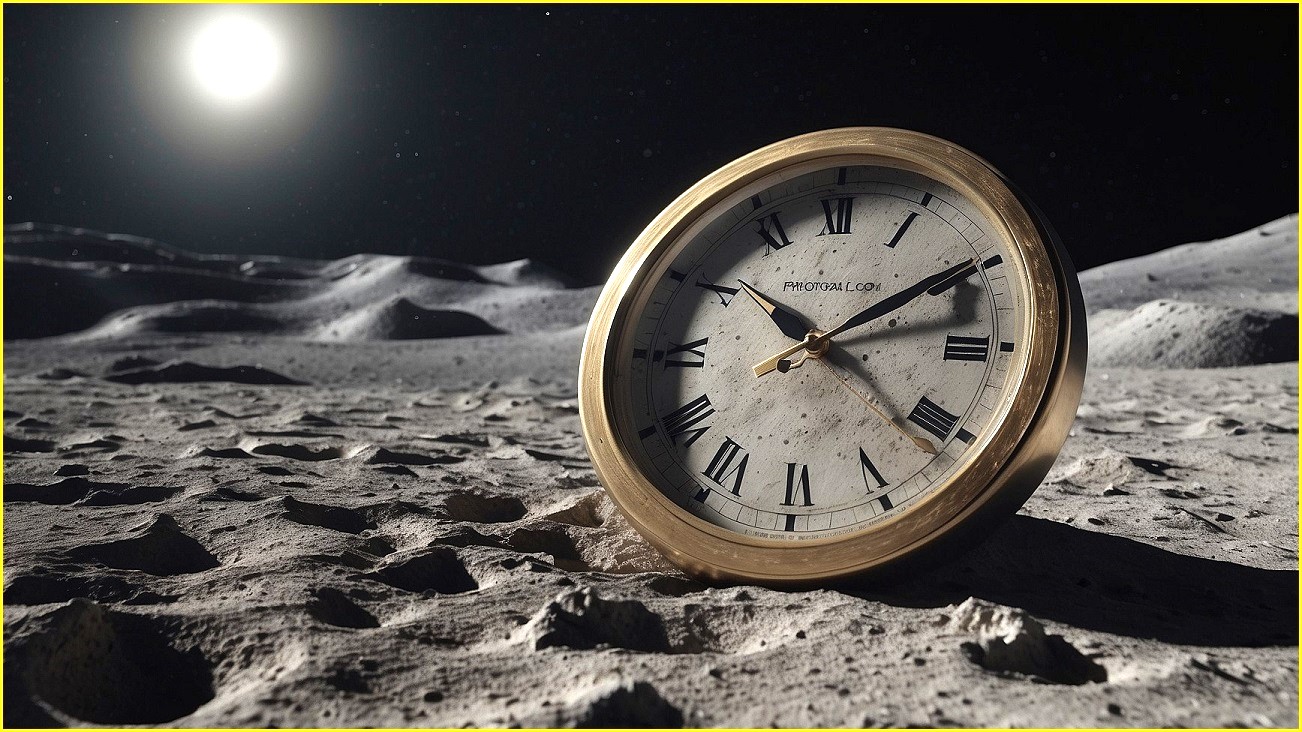Space agencies will jointly create what is effectively a new time zone for the Moon, NASA has announced as private space firms ride a surge of interest in lunar missions that has been stoked by the recent landing of the first ever privately funded Moon lander.
That landing – which saw Intuitive Machines’ IM-1 mission successfully deliver the Odysseus lander to the lunar surface before discovering that it was laying on its side – confirmed the viability of private lunar missions, drawing plaudits from the White House and paving the way for a flood of similar missions including the Australian Space Agency-backed Roo-ver.
With no fewer than seven more launches planned this year and a cavalcade of national and private enterprises boosting traffic to and from the Moon through 2028, space authorities now recognise the importance of standardising the measurement of time off the Earth – both in the ‘cislunar’ space between Earth and the Moon, and farther afield in places like Mars and beyond.
Aiming to stay ahead of similar work already underway at the European Space Agency (ESA), the US government’s White House Office of Science and Technology Policy (OSTP) this month directed NASA to “establish time standards at and around celestial bodies other than Earth” as part of the National Cislunar Science and Technology Strategy it launched in November 2022.
By the end of this year, the new mandate requires NASA to lay down a framework defining Coordinated Lunar Time (LTC) – a capability that will be crucial to supporting cislunar communications and positioning, navigation, and timing capabilities for endeavours including NASA’s Artemis mission, which is planning to orbit astronauts around the moon by September 2025 land on the surface in September 2026.
Over the next decade, the OSTP has noted, “human activity in Cislunar space will be equal to or exceed all that has occurred in this region since the Space Age began in 1957” – creating a pressing need for a time standard that will allow US and international agencies, as well as private enterprises, to co-ordinate their activities and boost the safety of flights and operations in space.
The new time standard will have four key capabilities, including traceability to the Earth standard Coordinated Universal Time (UTC); accuracy “sufficient to support precision navigation and science”; resilience if contact with Earth is lost; and scalability to extend the system to other planets and space environments.
Although it is well defined for use on earth, theories of general and special relativity mean UTC time cannot be simply transferred to the Moon: to an observer on the satellite, time dilation effects mean a clock on Earth would appear to lose an average of 58.7 microseconds per earth day – an effect that, OSTP said, has “important implications for developing standards and capabilities for operating on or around the Moon.”
Heaven is (like) a place on Earth
Just as GPS navigation systems rely on extremely accurate timekeeping to function on Earth, standardising on a universal lunar time standard will be critical to supporting the colonisation of the Moon – whose lower gravity makes it doubly valuable as a launching pad for sending rockets to other planets.
Time isn’t the only Earthbound construct likely to be transferred to the Moon, however: recognising the need to standardise communication between vehicles and bases on its surface, Nokia has talked openly about its work to develop a lunar 4G network that it has said could be deployed on the Moon by year’s end when Intuitive Machines launches its IM-2 mission.
Long-term colonisation of the Moon will even require the establishment of an internationally acceptable legal framework, some observers have pointed out, with astrophysicist Martin Elvis recently noting at an international conference that “the thing about space is there is very little law.”
Despite the promise shown in the recent Artemis Accords – a set of common principles designed to guide future Moon and space exploration – establishing consensus around social constructs will take time and international consensus.
Whether NASA, the ESA, or their analogues end up driving the agenda, coming years will see humanity’s relationship with the Moon changing dramatically.
With the US government planning to “develop capabilities to enable an enduring presence” on the Moon in coming years, the OSTP said, the creation of a unified time standard – as part of a broader ‘Cislunar ecosystem’ – “will be foundational to these efforts.”
“US leadership in defining a suitable standard… will benefit all spacefaring nations,” the agency noted, flagging the importance of international collaboration and a “shared vision and unity of purpose across departments and agencies.”
The US government, OSTP said, “will lead the responsible, peaceful, and sustainable exploration of Cislunar space and application of discoveries in this area.”










